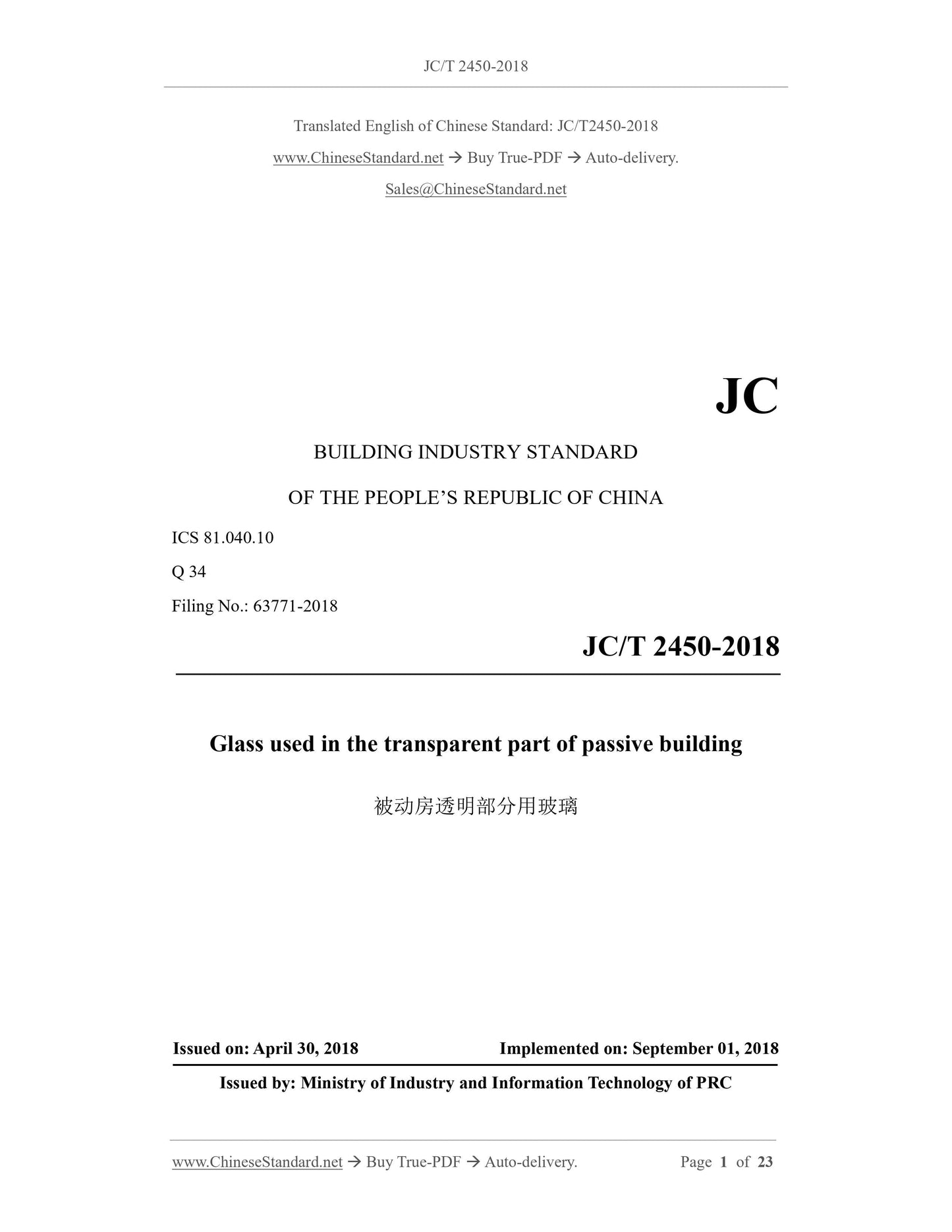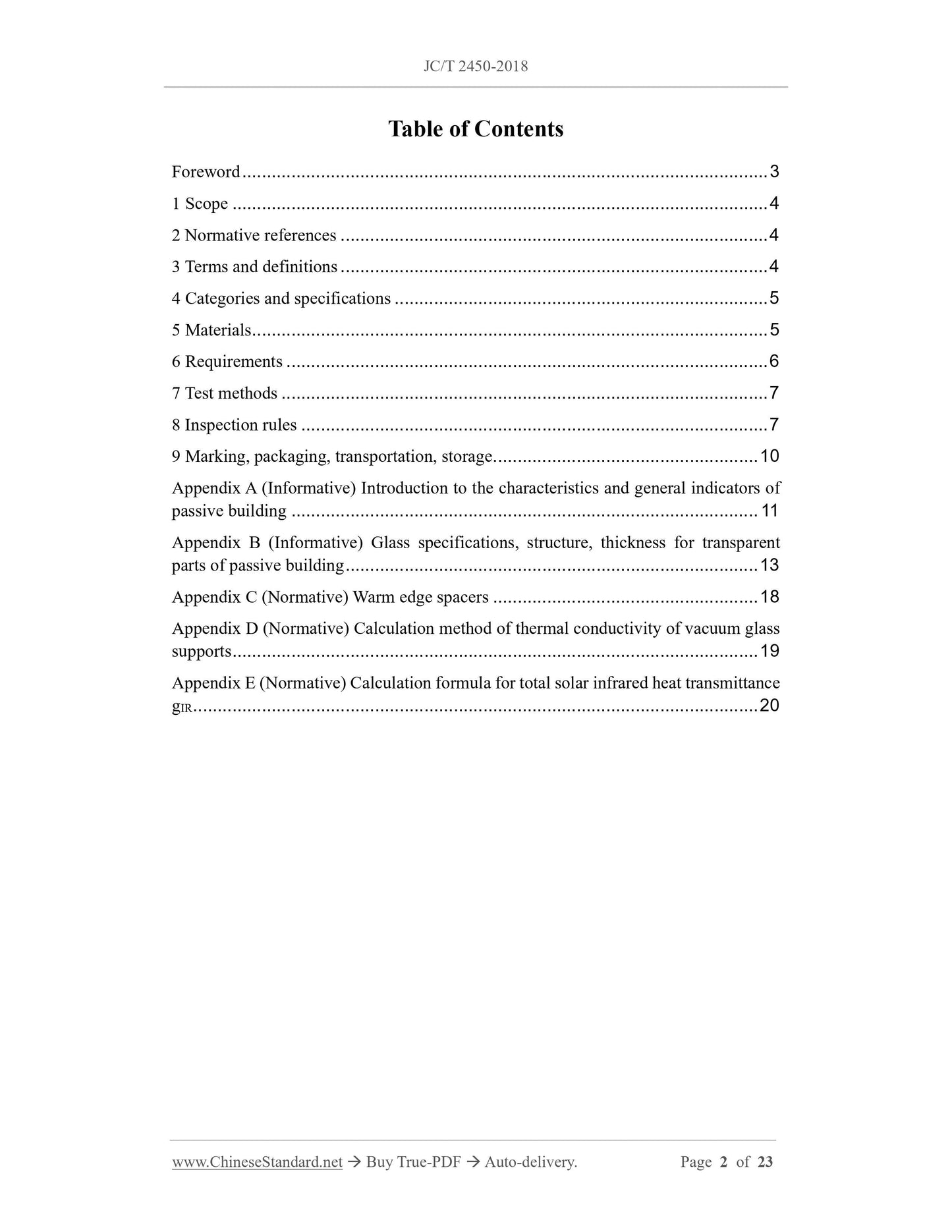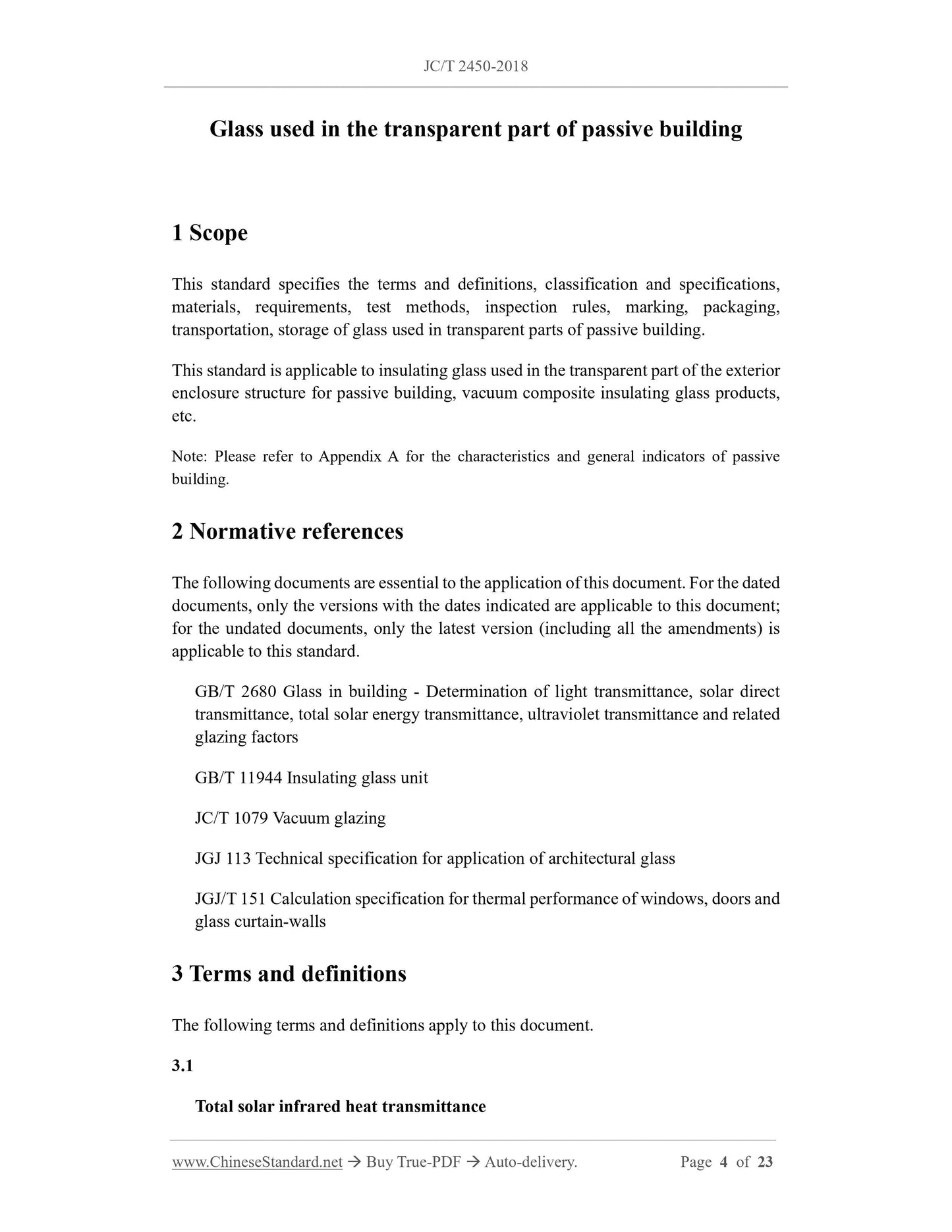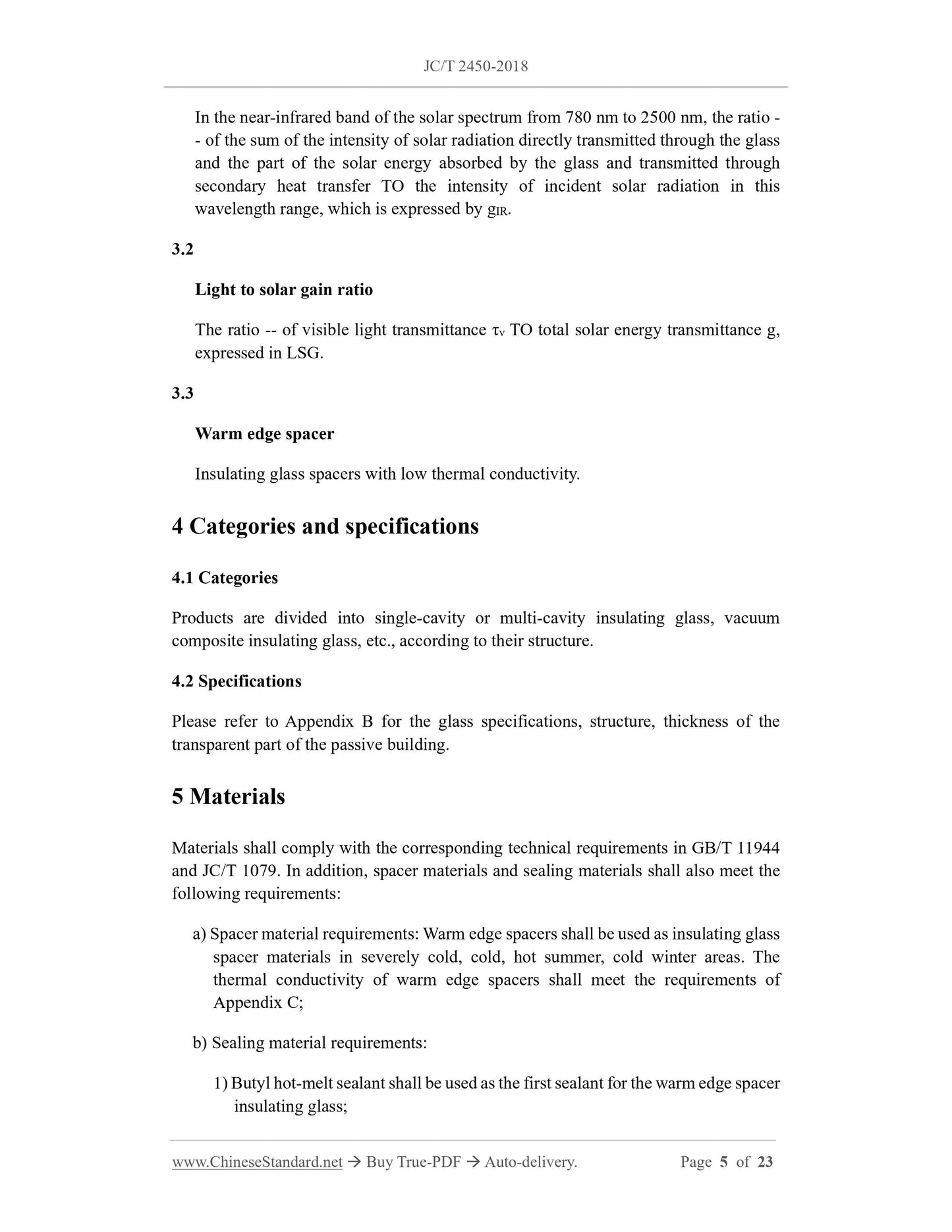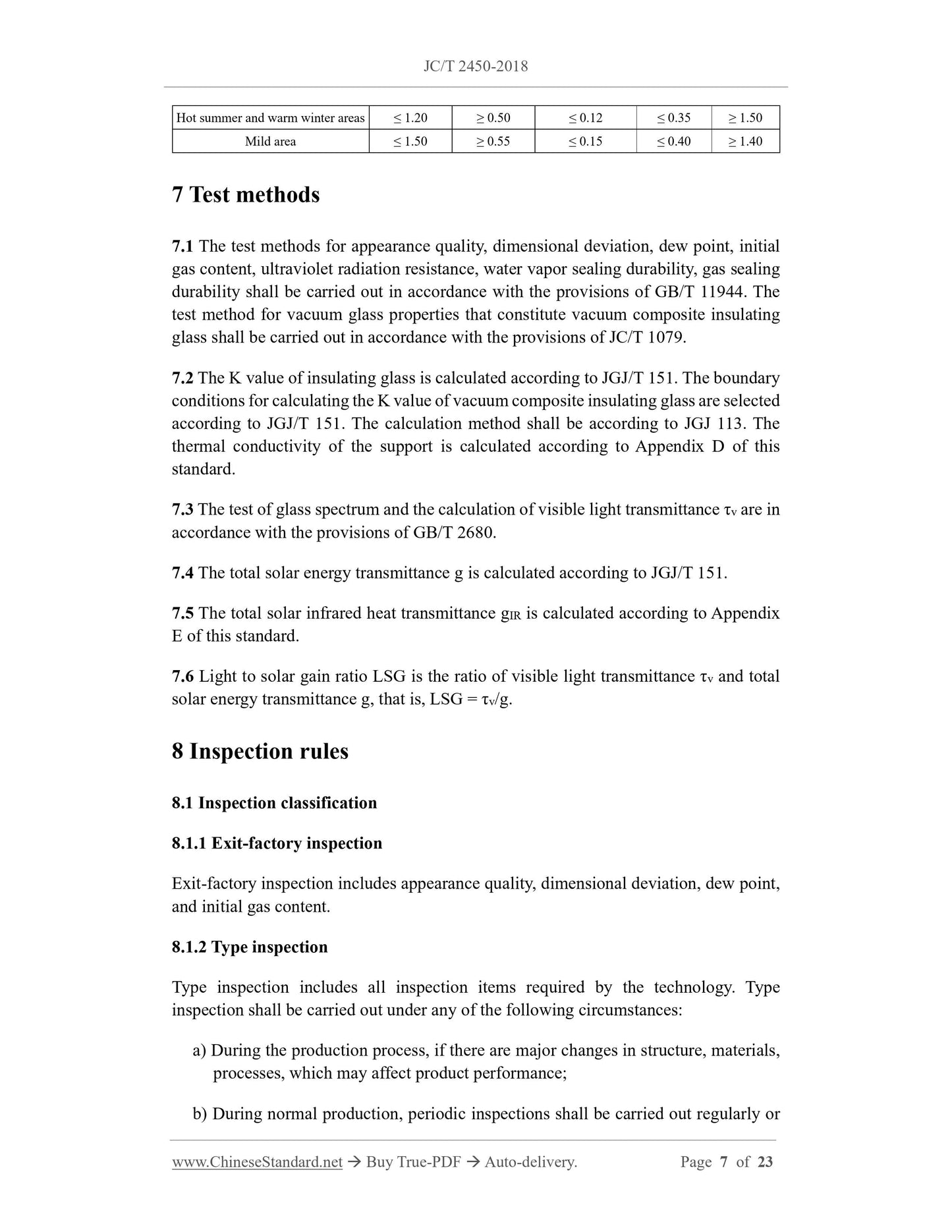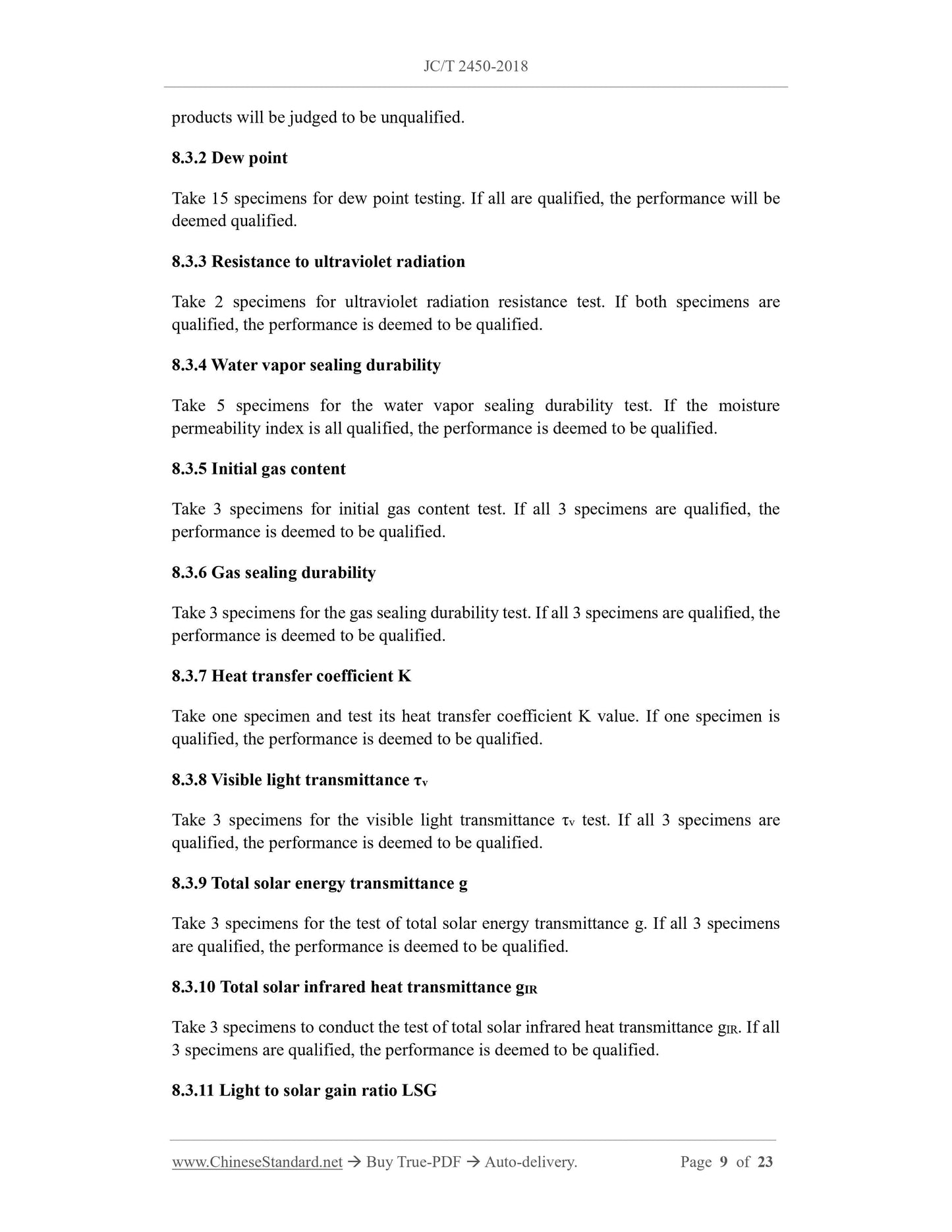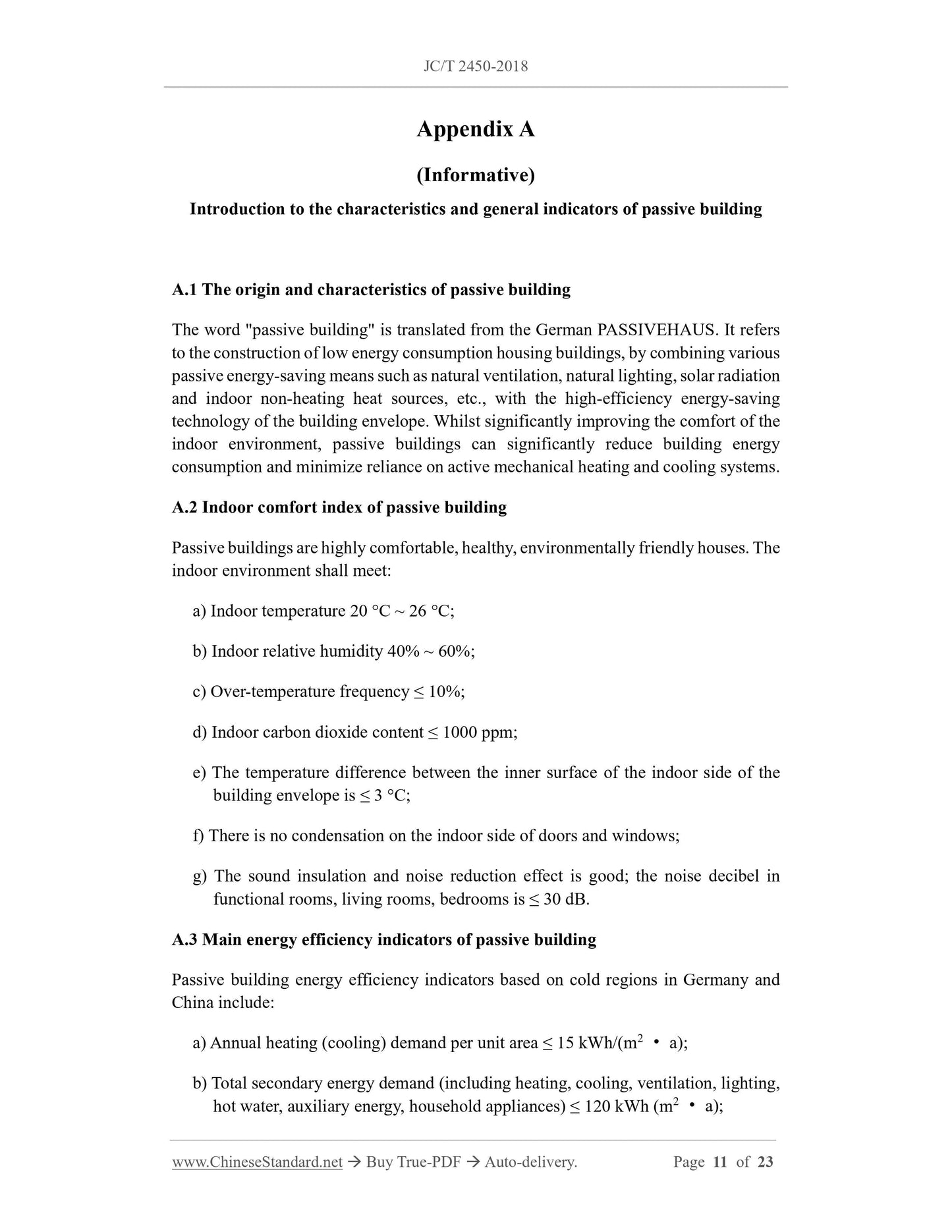1
/
of
7
www.ChineseStandard.us -- Field Test Asia Pte. Ltd.
JC/T 2450-2018 English PDF (JC/T2450-2018)
JC/T 2450-2018 English PDF (JC/T2450-2018)
Regular price
$350.00
Regular price
Sale price
$350.00
Unit price
/
per
Shipping calculated at checkout.
Couldn't load pickup availability
JC/T 2450-2018: Glass used in the transparent part of passive building
Delivery: 9 seconds. Download (and Email) true-PDF + Invoice.Get Quotation: Click JC/T 2450-2018 (Self-service in 1-minute)
Newer / historical versions: JC/T 2450-2018
Preview True-PDF
Scope
This standard specifies the terms and definitions, classification and specifications,materials, requirements, test methods, inspection rules, marking, packaging,
transportation, storage of glass used in transparent parts of passive building.
This standard is applicable to insulating glass used in the transparent part of the exterior
enclosure structure for passive building, vacuum composite insulating glass products,
etc.
Note. Please refer to Appendix A for the characteristics and general indicators of passive
building.
Basic Data
| Standard ID | JC/T 2450-2018 (JC/T2450-2018) |
| Description (Translated English) | Glass used in the transparent part of passive building |
| Sector / Industry | Building Materials Industry Standard (Recommended) |
| Classification of Chinese Standard | Q34 |
| Classification of International Standard | 81.040.10 |
| Word Count Estimation | 17,182 |
| Date of Issue | 2018-04-30 |
| Date of Implementation | 2018-09-01 |
| Quoted Standard | GB/T 2680; GB/T 11944; JC/T 1079; JGJ 113; JGJ/T 151 |
| Regulation (derived from) | Ministry of Industry and Information Technology Announcement No. 23 of 2018 |
| Issuing agency(ies) | Ministry of Industry and Information Technology |
| Summary | This standard specifies the terms and definitions, classification and specifications, materials, requirements, test methods, inspection rules, packaging, marking, transportation and storage of glass for transparent parts of passive houses. |
Share
